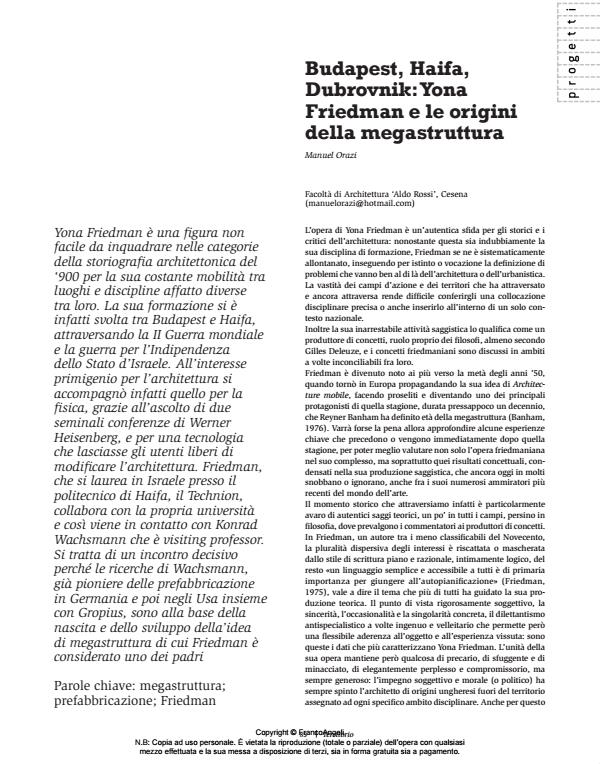Budapest, Haifa, Dubrovnik: Yona Friedman and the origins of megastructure
Journal title TERRITORIO
Author/s Manuel Orazi
Publishing Year 2014 Issue 2013/67
Language Italian Pages 7 P. 85-91 File size 2986 KB
DOI 10.3280/TR2013-067014
DOI is like a bar code for intellectual property: to have more infomation
click here
Below, you can see the article first page
If you want to buy this article in PDF format, you can do it, following the instructions to buy download credits

FrancoAngeli is member of Publishers International Linking Association, Inc (PILA), a not-for-profit association which run the CrossRef service enabling links to and from online scholarly content.
Yona Friedman is not an easy figure to frame within the categories of twentieth century architectural history because he moved constantly between totally different places and disciplines. He was educated partly in Budapest and partly in Haifa, during the Second World War and the Israeli War of Independence. His primary interest in architecture was in fact accompanied by an interest in physics after attending two seminal conferences by Werner Heisenberg and by an interest in technology which leaves users free to modify architecture. Friedman obtained a degree in Israel from Technion, the Haifa Polytechnic, and thereby came into contact with Konrad Wachsmann who was a visiting professor. This was a decisive meeting because Wachsmann’s research (he was already a pioneer of prefabrication in Germany and then in the United States with Gropius) formed the basis for the birth and then the development of the idea of a megastructure of which Friedman was one of the founders.
Keywords: Megastructure; prefabrication; Friedman
Manuel Orazi, Budapest, Haifa, Dubrovnik: Yona Friedman e le origini della megastruttura in "TERRITORIO" 67/2013, pp 85-91, DOI: 10.3280/TR2013-067014